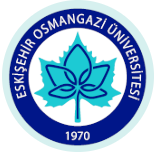Abstract
Turkey is a country that frequently faces with earthquakes. According to Disaster and Emergency Management Presidency, our country, unfortunately, ranks high in earthquake fatalities and the number of people affected by earthquakes. After an earthquake, structural integrity of buildings may be damaged, and aftershocks may cause the buildings totally collapse. Leakage of gas, water and other hazardous materials may increase the severity of the disaster. Therefore, the post-earthquake indoor environments pose many risks for the search and rescue teams and rescue dogs. Use of robots in the search of human victims will substantially decrease risks of further fatalities and injuries facing the rescue teams. The main task of the robot team, in a post-earthquake indoor environment, will be to explore the building, to produce a highly accurate map, and to detect and locate the victims as fast as possible. The aim of this project is to build a multi-robot system that will produce or update the map of a damaged building, search and detect victims and other significant objects in a reasonable time, and convey the map, and an accurate description of the post-earthquake environment to rescue teams and first responders. Robots will explore the environment with depth sensors and produce or update a map in coordination with each other. First responders could use the map and important information provided by robots to quickly reach victims while engaging in less risk. In order to achieve this purpose, the subtasks of exploration, coordination, communication and localization must be efficiently implemented, and integrated on the multi-robot system. The robot team will consist of both ground and aerial robots, since ground robots have limited surface mobility such as being hindered by rubble, limited communication, and noisy sensor readings due to the environmental conditions. The cooperation of aerial robots will increase the flexibility of the team, and accuracy of the map produced. In general, grid-based approaches are used for multi-robot exploration. However, in this project, we will examine the performance of spatial-based exploration approaches in disaster environments. We plan to extend the particle filter based simultaneous localization and mapping (SLAM) for multi ground robot systems. Additionally, the data obtained by aerial robots could be used for localization of ground robots. Similarly, a probabilistic approach may be appropriate to localize aerial robots. In order to increase efficiency of the robot team, coordination among the robots must be achieved. In that case, robots should spread out to search the environment while maintaining communication between robots. Since aerial robots will be in the communication range of ground robots, communication range of the whole team will be increased. In order to achieve coordination between robots, market-based or auction-based approaches will be used. For detecting disaster victims and structures (such as collapsed walls, rubble piles) that are significant to first responders, we plan to employ color and depth sensors (Kinect) mounted on the ground robots. We will modify the state-of-the-art object detection and classification methods to meet the challenges and constraints of a post-earthquake site, with the aim of detection and localization of victims and other significant structures.
Keywords
Exploration, Grid-based, Spatial-based, Communication, Coordination, Market-based, Localization, Particle Filter, Mapping, SLAM, Earthquake, Kinect, Laser, Ground Robots, AerialAir Robots, Navigation, Disaster Victim Search, Classification
Fund
Funded by The Scientific Research Project Foundation of Osmangazi University (Project #201415012(2013-253))

